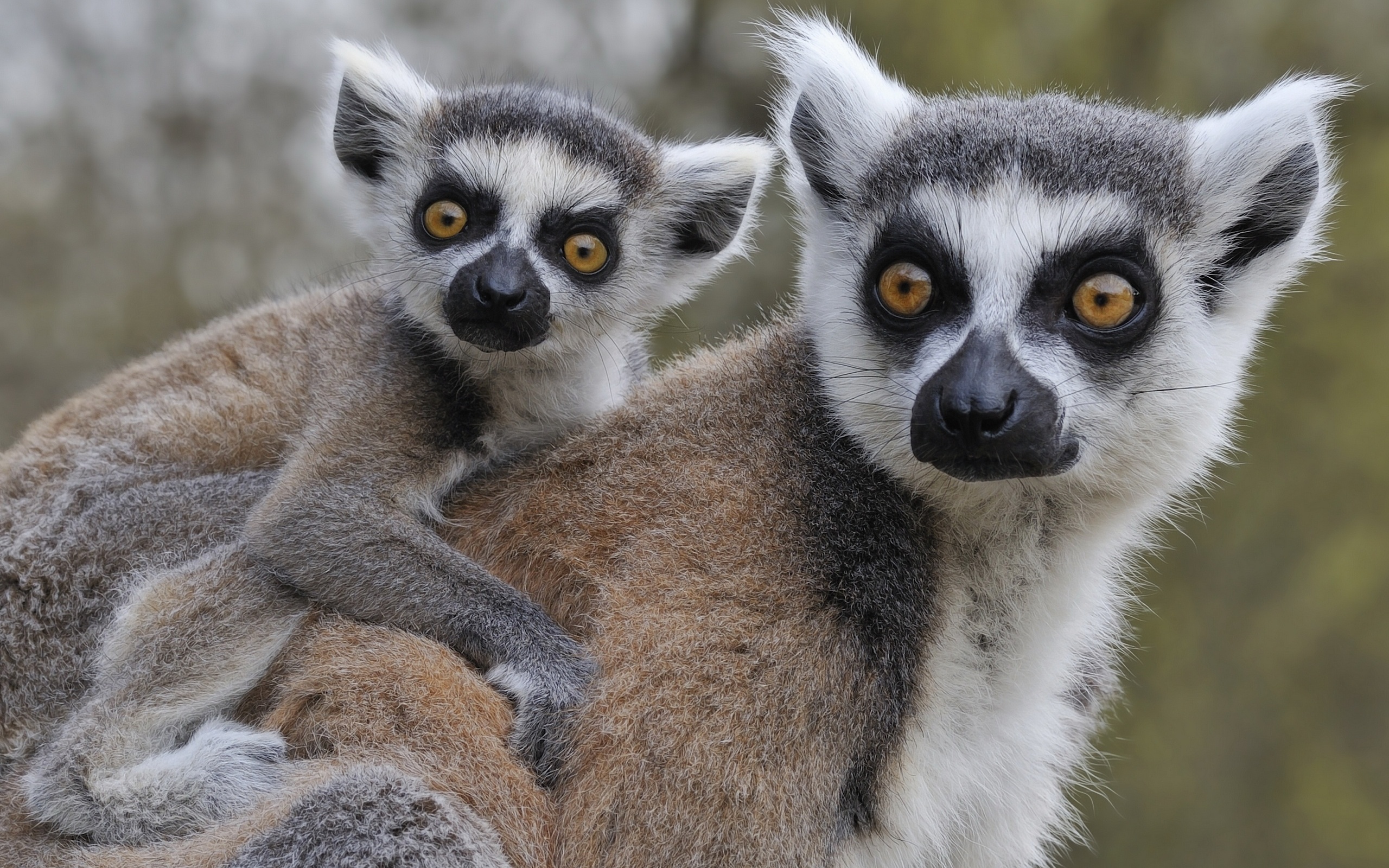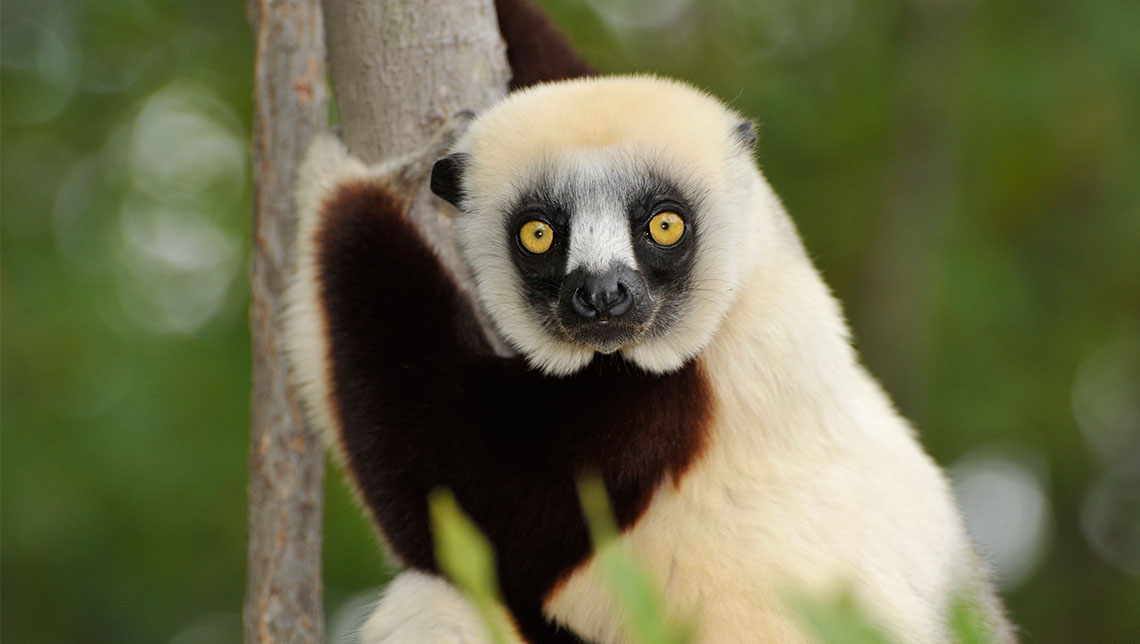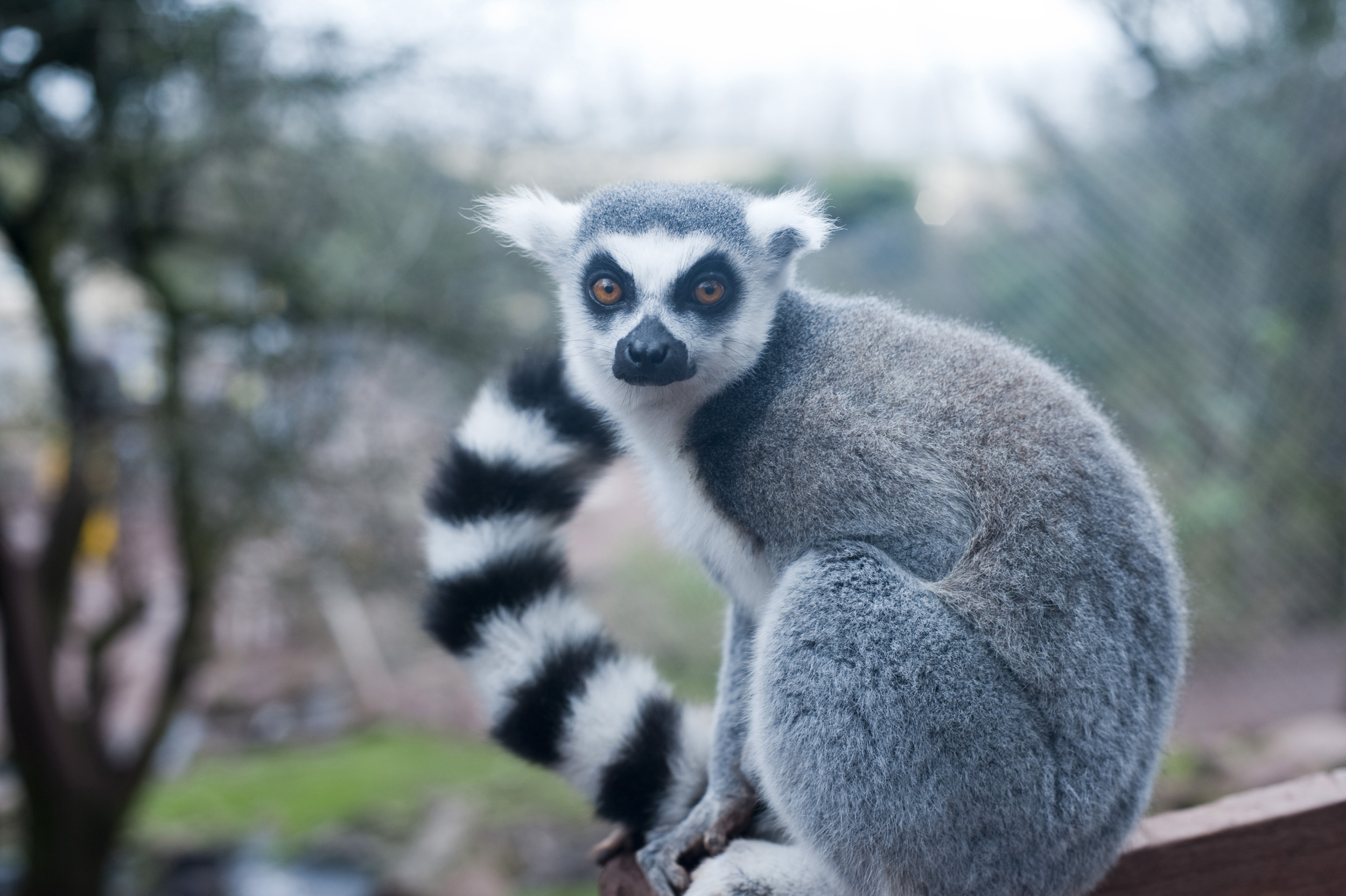
Lemurs are primitive monkeys that originally
inhabited parts of North America, Eurasia,
and Africa, but competition with monkeys and
apes resulted in their present distribution, restricted
to Madagascar. Humans arrived on Madagascar
about two thousand years ago, contributing
to extinctions of one third of the island's
species through habitat destruction, hunting, climate
change, and perhaps new diseases. Most lemurs
are highly endangered.
Most lemurs are arboreal (tree-dwelling), although
ring-tailed lemurs spend more time on the
ground. Lemurs subsist primarily on three to four
food species, consisting of a mix of leaves, fruit,
buds, bark, and shoots, but favored foods can vary
monthly or seasonally. The golden bamboo lemur
tolerates high levels of cyanide in the bamboo
shoots. The smaller, nocturnal lemurs and the ayeaye
eat more insects. Several species are cathemeral
(active during parts of day and night), and
there are also diurnal (day-active) forms, such as
ring-tailed lemurs or indris. The diurnal species
mayhave a nocturnal past, because they share certain
features with nocturnal lemurs, including
seasonal breeding, female dominance, and reliance
on scent for communication.
Unique Primates
Lemurs exhibit many types of social organization.
They are solitary in smaller nocturnal forms,
while larger diurnal or cathemeral forms live in
pairs that sometimes congregate in larger groups,
usually with 1:1 sex ratios. Lemurs lack sexual dimorphism,
and if there is a difference, females
are larger than males. In social species, females
largely dominate males, to the extent that males
signal submissiveness to all females independent
of context. This unusual primate pattern may be
due either to seasonally low food productivity
and the resulting reproductive costs, or may be
partly a function of extinctions of raptors that
preyed on primates.
Lemurs range in size from the pygmy mouse
lemur at thirty-one grams (about one ounce) to the
indri at seven kilograms (sixteen pounds), although
many extinct forms were larger. All lemurs
have longer posterior than anterior limbs,
and their anatomy reflects their ability to practice
vertical clinging and leaping. This is most developed
in the sifakas and indris, which generally
position themselves vertically while in the
trees, leap from tree to tree, and exhibit a leaping,
kangaroo-like gait when on the ground.
Cheirogaleidae include the fat-tailed and greater
dwarf lemurs, primates that hibernate forupto six
months during the dry season. Many of the females
in Cheirogaleidae, Megaladapidae, and
Lemuridae carry offspring in their mouths and
sometimes park them on branches when active.
The aye-aye has a high brain-to-body ratio and
also has incisors that grow throughout its life (as
in rodents) resulting in a dental formula of 1-0-0-3.
The teeth are used to gnaw on dead wood during
searches for grubs that are then removed with a
lengthy third finger.
Lemur Facts
Classification:
Kingdom: Animalia
Subkingdom: Bilateria
Phylum: Chordata
Subphylum: Vertebrata
Class: Mammalia
Order: Primates
Suborders: Prosimians (lemurs, lorises, and tarsiers) or
Strepsirhini (lemurs and lorises only)
Superfamily: Lemuroidea
Families: Lemuridae (brown, black, crowned, redbellied
lemurs, bamboo lemurs, ring-tailed lemurs,
mongoose lemurs, ruffed lemurs); Megaladapidae
(sportive lemurs); Cheirogaleidae (dwarf lemurs,
mouse lemurs, fork-marked lemurs); Indriidae (avahi
or woolly lemurs, indris, sifakas); Daubentoniidae
(aye-ayes)
Geographical location: Madagascar and adjacent Comoro
Islands
Habitat: Forests (primary or secondary, dry, humid, or
rain forests, evergreen or bamboo forests); sometimes
also bush, scrub, or savanna edges of humid
forests, spiny deserts, and tree plantations
Gestational period: From 65 days in the dwarf lemur to
175 days in the larger sifaka, indri, and aye-aye
Life span: Ranges from about nine years in the greater
dwarf lemur to twenty-five to thirty years in ringtailed,
brown, and black lemurs
Special anatomy: A long snout with a sensitive, moist
pad (rhinarium); incompletely fused bony eye
socket; reflecting retina (tapetum); ancestral dental
formula of 2:1:3:3; dental comb in the lower jaw and
sublingua; unfused lower jaw and frontal bone; multiple
pairs of breasts; two-section uterus; grooming
claw on second toe of foot
Other popular Animals
Photo Gallery of - Lemur








 Animalia Life
Animalia Life